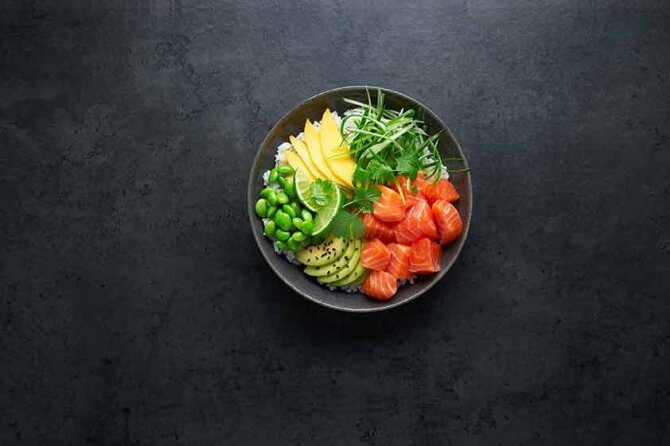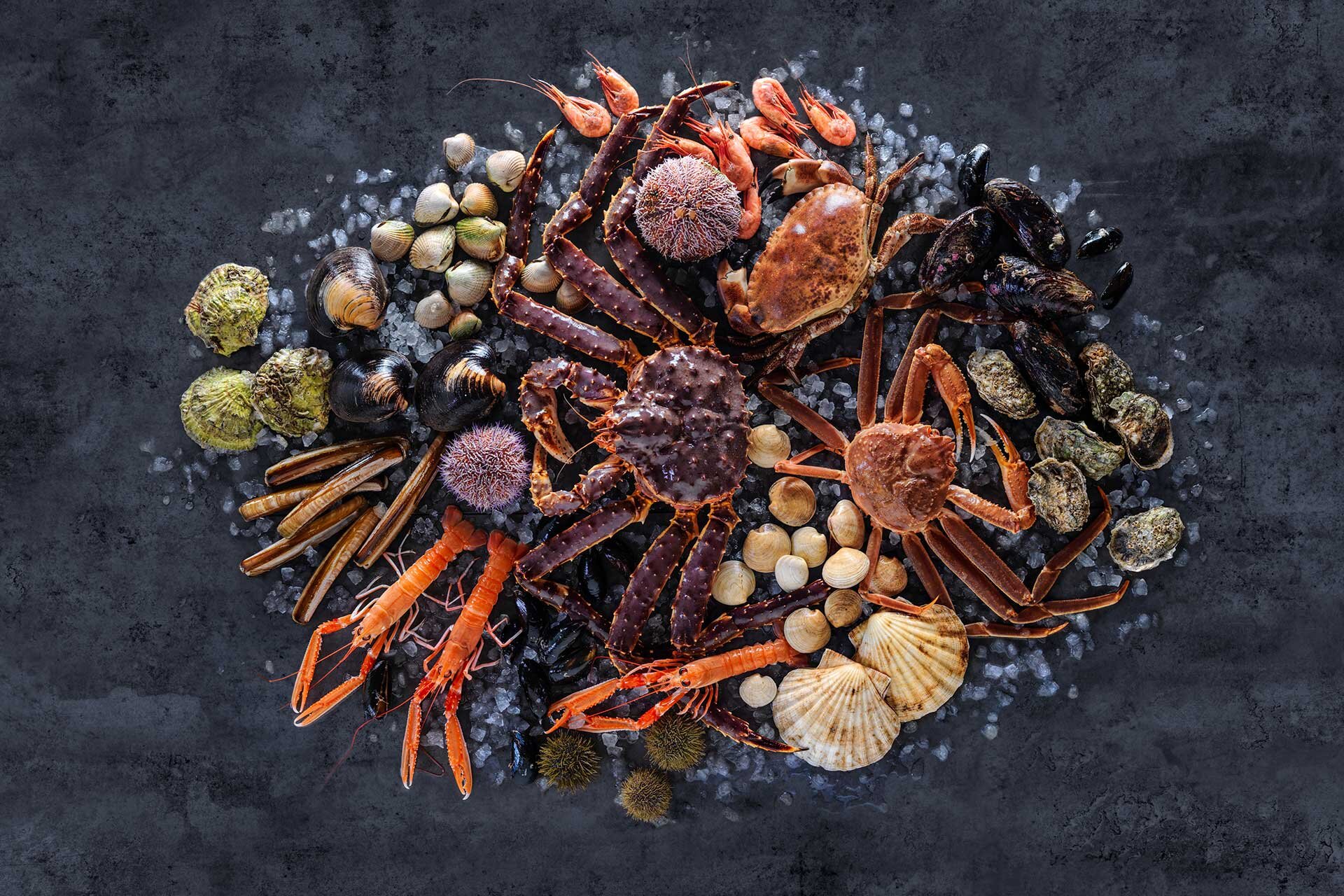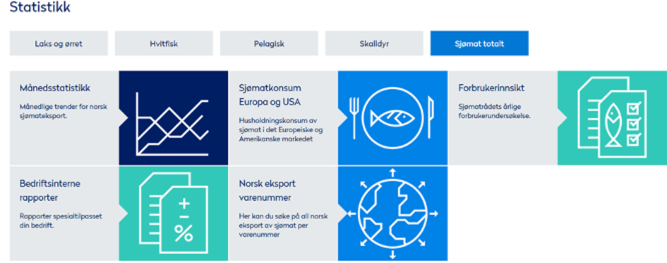NSC research has revealed that 3 in 4 seafood consumers say a wide assortment of seafood drives their choice of retailer. This desire for choice, alongside consumer interest in healthy proteins and on-the-go eating is sparking greater ‘snackification’ and innovation in the seafood industry.
With a host of new digital channels giving retail and OOH more opportunities to satisfy evolving consumer needs, this reveals significant potential to increase the consumption of healthy, sustainably sourced seafood.
In this article, we reveal the consumer trends, market dynamics and pioneers spearheading these wide-ranging changes in the seafood landscape. We cover:
- Rising demand for high protein, healthy, on-the-go foods, which is leading to more seafood snacks and food-to-go.
- Innovative seafood dishes from food operators, combining choice, customisation and convenience.
- Luxurious seafood options in retail with high-end, easy to create meal kits and frozen seafood innovations.
- Premiumisation of traditional seafood formats using sophisticated packaging and marketing.
Rising demand for high protein, healthy, on-the-go foods
Health remains high on the agenda for consumers - long after the pandemic brought it into sharp focus. Now we’re back in the office at least a few days a week, snacking and on-the-go eating has become more prevalent. There’s less time to prepare healthy meals and snacks, but we’re not willing to compromise. So we’re seeing greater innovation in the seafood market with more convenient yet nutritious on-the-go options.
Meal skipping has increased
The number of consumers skipping meals has risen. In 2013, 30% of consumers said they had ‘skipped at least one main meal’ yesterday. By 2021 this had climbed to 40%.
This could be due to busy ‘on-the-go' lifestyles, but it could also be attributed to a rise in fasting for health reasons, or consumers tightening their belts due to economic pressures. Whatever the reason, snacking seems to be picking up the slack now a high proportion of meals are off the proverbial table.
Snacking is on the rise
While mealtimes become less frequent, snacking is on the rise, and according to Mondelez International, 88% of consumers worldwide snack daily. These results are amplified among Gen Z and millennials, 94% of whom eat one or more snacks per day, with one-in-three (33%) indulging in three or more.
Morning snacks show growth
Afternoon snacking has increased 22%, but morning snacking has seen most growth - a 42% increase from 2013 to 2021. Digging into the factors that drive these 6:00am to 10:00am choices: Mondelez reveals consumers want snacks to sustain and nourish, energise and fuel, indicating a window of opportunity for healthy snacks.
Increased interest in proteins
Meanwhile, protein’s reputation as a ‘fuller for longer’ macronutrient with additional health benefits has led to greater demand for protein-rich foods. Euromonitor attributes this to health concerns, highlighting an opportunity for snacks and foods that highlight protein’s contribution to energy levels, weight loss, muscle repair and satiety.
Fortunately, seafood has a strong reputation as a nutritious protein packed with omega-3s and other key vitamins and minerals. It’s hardly surprising, therefore, that snacks like salmon jerky and seaweed snacks are starting to populate the shop shelves, while bite-sized on-the-go options like sushi remain popular in food outlets.
New routes to market
Technology has been driving change in seafood retail for consumers, with exciting new opportunities to satisfy food cravings – whatever the time. The number of channels has increased with delivery apps to omnichannel services such as ‘click and collect’ becoming mainstream.
What’s more, these digital options are showing huge value as a sales channel, with snacks sold worldwide through e-commerce increasing from $18 billion in 2019 to $30.5 billion in 2021, according to Euromonitor.
Salmon has been the lucky winner of first the sushi megatrend, then the sashimi megatrend. And now also the poké bowl megatrend.
Christian Chramer
CEO of the Norwegian Seafood Council

Photographer: Aina Hole
Innovative seafood dishes from food operators
When we asked consumers how they were responding to increased seafood prices, the key theme was a shift towards eating at home more often – cooking at home more, buying fewer ready meals and eating less often at restaurants.
Against these odds, food operators have risen to the challenge, offering tempting dishes that provide an array of options, while showcasing fresh sustainable seafood as the centrepiece.
Sushi to sashimi to poké
With the exception of bacalao on the Iberian Peninsula, salmon is one of the most popular fishes enjoyed out of home. When it’s eaten out, raw rules – with sushi, sashimi or poké. bowls most popular across most of the markets studied.
In France, Germany and Spain, consumers are more likely to opt for browned or seared salmon when they eat out, while in Saudi Arabia, the UK and the US, frying comes out top.
Greater customisation & variety
Satisfying both heath and snacking trends, sushi has been a winner for some time. Over the last few years, however, more food operators have started to serve poké bowls. Inspired by Hawaiian cuisine, diners can customise their seafood or protein of choice with a tempting array of healthy ingredients and sauces.
Quick and simple to prepare, and easy to grab and go, they are well-suited to the booming food-to-go market, and help operators to overcome widespread recruiting challenges.
What’s striking when I move around the markets where we operate and have offices, is just how global poké bowls have become. They’re in Brazil, the US, in China, in Japan, in France. You find them from Sweden to Greece. The endlessly adaptable options allow each country and each consumer to tailor their bowl to their tastes.
Christian Chramer
CEO of the Norwegian Seafood Council

Photographer: Aleksandra Platonova, Pexels
Luxurious seafood options in retail
Convenience has become a megatrend. Today, people around the world can have sushi delivered in minutes, snack on healthy, nutritious seafood on the go, or prepare a seafood dish at home easily and quickly using a meal kit.
Seafood is perceived as a luxury by many, so innovative new freezing technologies are being introduced to improve the quality of frozen seafood. Retail is also providing tempting alternatives for consumers dining out less, creating luxurious ‘at home’ occasions with high-end, easy to create meal kits.
Advanced freezing technologies
Technology is revolutionising the seafood freezing process, improving its freshness, taste and nutritional value. This has the potential to transform perceptions of frozen seafood, turning it into a high-quality convenient alternative with a longer ‘shelf life’.
Originally developed to freeze stem cells, Cells Alive System (CAS) generates a magnetic field around fresh food, consisting of pulsed magnetic fields, low-frequency waves and other types of weak energy. This causes the water molecules in the seafood to vibrate, so the cell tissues remain intact during freezing.
As a result, seafood retains its flavour, texture and nutrient profile once defrosted, improving customer experience. And because the technology prevents degradation over longer time periods, seafood lasts longer, reducing food waste in the home.
Convenient 'at-home' indulgence
Chilled or frozen ready meals are not new, but have seen a notable increase in quality, with high-end options now available in most markets. Highlighting quality, provenance and nutritional benefits as well as convenience, these are amping up seafood’s appeal too.
Meal kits boomed during the pandemic as subscription schemes attracted more users and restaurants carved out new ways to keep their business afloat. With the ability to filter kit orders by ingredients, these are making it easier to cater for those with allergies or specific dietary needs.
Seafood meal kits provide pre-portioned ingredients and easy-to-follow recipes, so even those with limited cooking skills can enjoy restaurant-quality meals, without meal planning or grocery shopping.
Distinct from the weeknight ready meal, seafood meal kits usually offer greater indulgence, with options such as Cajun shrimp and sweet pepper, wild Alaskan salmon, spicy maple-glazed tilapia with fig and roasted vegetable rice, or baked parmesan- and panko-coated salmon with squash and garlic kale. And due to their portion size, range of nutrients and lower fat content compared to most meat dishes, these are also attractive to consumers managing their weight.

Photographer: Mart Production, Pexels
Premiumisation of traditional seafood formats
Increasing value by assuring consumers of sustainability through origin labelling, accreditations and harvesting methods, has become common practice in the industry. There are also numerous brands ‘premiumising’ seafood with luxurious marinades, inventive curing techniques and innovative concepts like seafood charcuterie.
Moving beyond assurances on the value chain and increased product innovation, however, the last few years have seen a rise in brands making traditional seafood formats ultra-covetable, with eye-catching packaging and quirky brand messaging.
With savvy promotion via social media, these are able to command higher margins and revive consumer interest in traditionally less ‘glamorous’ formats.
Fishwife: adding glamour to tinned seafood
It was during the pandemic while raiding the cupboard for tinned fish staples that Becca Millstein and co-founder Caroline Goldfarb had a ‘lightbulb’ moment. Recognising the growing appetite for easy, clean, simple foods, they realised that canned fish checked a lot of boxes. Having spent time in Spain and Portugal, they spotted a gap in the US market for high-quality canned fish. So they founded Fishwife in 2020, bringing Iberian conservas culture to the US.
"The canned fish grocery segment is worth more than $2.2 billlion in the US" says Millstein, "with three big brands dominating around 80% of the market share. So it’s not a new, unfamiliar concept. But at the same time, it hadn’t been innovated in at all."

Photographer: Fishwife
Today, Fishwife sells products so beautifully packaged and of such a high quality that people give them as presents. You can sign up for a subscription, buy Fishwife merchandise and gift cards. The brand has been featured in The New York Times and Vogue. And the firm’s smoked salmon, which comes from Kvarøy Arctic, is one of its best sellers. It hasn’t been hard to convince current fans of Fishwife of its merits, but Millstein acknowledges that nationwide retail expansion will require greater education.
"We need to transform everyone’s understanding of their use cases, from mashing it with mayonnaise and spreading it on bread, to putting it over a rice bowl or on ramen. […] It’s a really fun education process because it’s not a totally novel product, like mushroom jerky or even plant-based meat: this is canned fish!"

Photographer: Fishwife
In Norway, if you eat mackerel, you probably eat it one way: in tomato sauce on bread. But in Korea, there are many different ways to eat it.
Mia Sætre Bernhardsen
NSC Country Manager South Korea
Spotlight: South Korea’s appetite for innovation
Fast-paced lifestyles and changing demographics are having a big impact on seafood choices in South Korea. A generational shift has led traditional choices to lose ground to those of younger generations.
Alongside, there has been an increase in single-portion seafood options, catering to the growing number of single-person households. In this dynamic market, consumers expect a stream of convenient and inspiring innovations and products from seafood suppliers.
"Koreans are interested in all kinds of species: whitefish, pelagic species or shellfish. And there’s a lot of diversity around a single species," explains NSC Country Manager South Korea, Mia Sætre Bernhardsen.
"[Take] mackerel, for example. In Norway, if you eat mackerel, you probably eat it one way: in tomato sauce on bread. But in Korea, there are many different ways to eat it."
To satisfy demand for new products amid rising costs, there has been a boom in sauces – from teriyaki to soy sauce to different kinds of spices – as an easy way to deliver new tastes, without necessarily adding new species.
E-commerce is advanced and Korea has an established cold chain, so new products are also focused on convenience. This ranges from microwaveable products through to innovation in child-friendly salmon fillets, using offcuts too small for a standard "grown-up" portion.

Photographer: Lee Barker, SfN
Conclusion
These innovations in the seafood market highlight a pivotal shift towards more accessible and sustainable seafood consumption. As consumer preferences lean towards healthy, high-protein, and convenient eating options, the seafood industry is responding with snackable and premium products that cater to these.
Digital platforms in retail and out-of-home dining are boosting their ability to meet and expand consumer expectations, promising a significant increase in seafood consumption. And efforts to add value to traditional seafood with attractive packaging, luxurious meal options, and customisable dishes underscores an exciting evolution in how seafood is being marketed and enjoyed.
Catering to the growing appetite for variety and sustainability, these developments are setting the stage for continued innovation and growth in the seafood sector.




